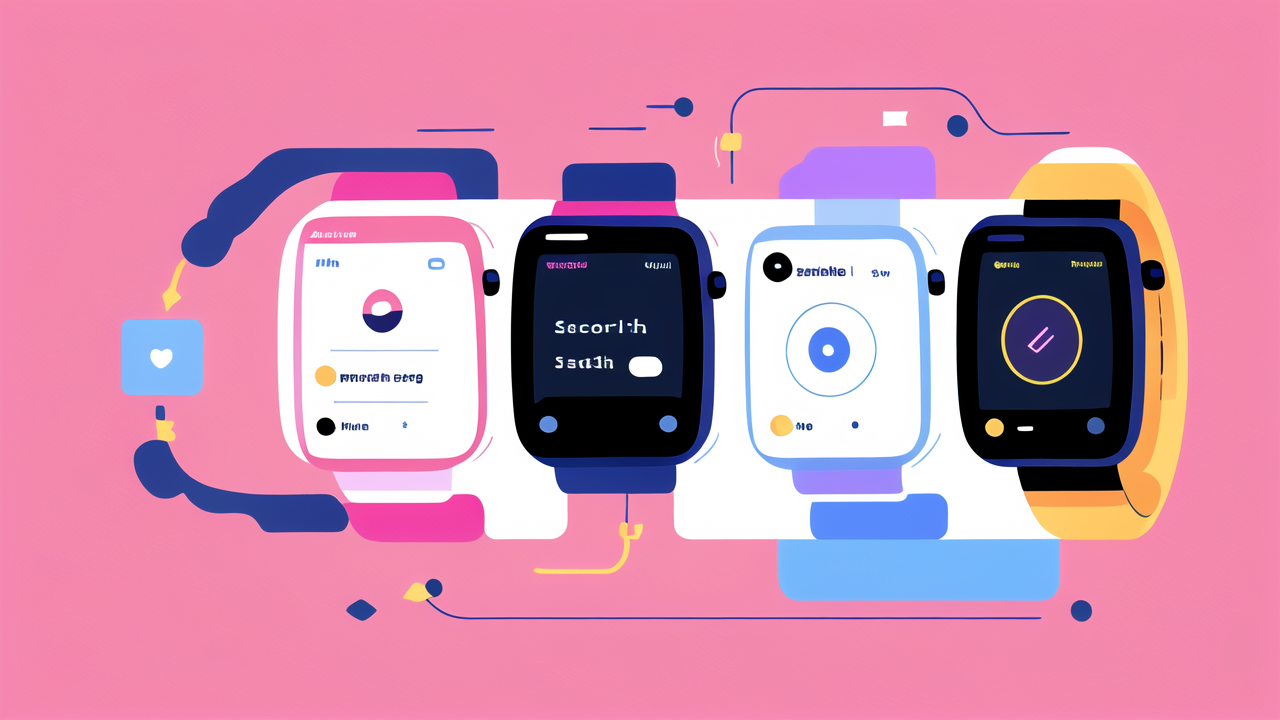Introduction to Smart Body Measurement Devices
The Evolution of Consumer Health Monitoring
Health tracking has come a long way. It started with simple pedometers and heart rate monitors. Now, we have smart devices that do much more. These devices can track sleep, stress, and even blood oxygen levels.

The shift to digital health tools has been rapid. People now want more control over their health data. This has led to the rise of wearable tech. These devices offer real-time health insights. They help users make informed decisions about their wellness.
As tech improves, so do these devices. They're getting smaller, more accurate, and more powerful. Many can now sync with smartphones and health apps. This makes it easier for users to track their progress over time.
The Rise of Smart Watches in Health Care
Smart watches have become key players in personal health monitoring. They're not just for telling time anymore. These devices now offer a range of health features. They can track steps, monitor heart rate, and even detect falls.
Many smart watches now have FDA-approved features. This includes ECG monitors and blood oxygen sensors. These tools can help detect serious health issues early. Some watches can even alert emergency services if needed.
Doctors are starting to use data from smart watches too. It can give them a more complete picture of a patient's health. This data can help with diagnosis and treatment plans. As these devices improve, they may become standard in healthcare.
Regulatory Environment for Body Measurement Devices in the US
The FDA plays a big role in regulating health devices. They ensure these products are safe and effective. For many health features, companies need FDA approval. This process can be long and costly.
There are different classes of medical devices. Class I devices have the least regulation. Class III devices have the most. Most smart watches fall under Class II. This means they need to meet certain standards.
The FDA has been working to speed up the approval process. They want to encourage innovation in digital health. But they also need to ensure public safety. It's a delicate balance that affects how quickly new features can come to market.
Key Features of Top Smart Watch Body Measurement Trackers
Advanced Metrics and Analytics
Modern smart watches offer a wide range of health metrics. These go beyond basic step counting. Many can now measure:

- Heart rate variability
- Blood oxygen levels
- Sleep quality
- Stress levels
- Body temperature
These devices don't just collect data. They also analyze it. They can spot trends and patterns. This helps users understand their health better. Some watches can even predict health issues before they happen.
Many smart watches use AI to provide personalized insights. They can suggest ways to improve sleep or reduce stress. Some can even detect irregular heart rhythms. This level of detail was once only available in medical settings.
Integration with Health Systems and IoT
Smart watches are becoming part of larger health ecosystems. Many can now sync with electronic health records. This lets doctors access real-time patient data. It can help with diagnosis and treatment planning.
These devices also connect with other smart home devices. They can link to smart scales, blood pressure monitors, and more. This creates a more complete picture of a person's health.
Some watches can even integrate with fitness equipment. They can track workouts on treadmills or bikes. This data syncs automatically with health apps. It makes it easier for users to monitor their fitness progress.
User-Friendly Interfaces and Comfort
Usability is key for any wearable device. Smart watch makers know this. They're designing interfaces that are easy to use. Many now have touch screens and voice controls. This makes it simple to check health stats or start a workout.
Comfort is also crucial. People need to wear these devices all day, every day. Manufacturers are using lighter materials. They're creating more ergonomic designs. Some watches even have interchangeable bands. Users can choose what works best for them.
Battery life is another important factor. Many smart watches now last several days on a single charge. Some use solar power to extend battery life even further. This means users can track their health 24/7 without interruption.
Market Trends and Consumer Adoption in the United States
Analyzing the Growth of the Smart Watch Segment
The smart watch market is booming in the US. Sales have been growing steadily year over year. More people are seeing the value in these devices. They're not just for tech enthusiasts anymore.

Several factors are driving this growth:
- Increased health awareness
- Improved technology
- More affordable options
- Integration with smartphones
Apple leads the market, but other brands are gaining ground. Companies like Fitbit, Garmin, and Samsung offer strong alternatives. This competition is driving innovation and lowering prices.
The pandemic has also boosted sales. People are more focused on health monitoring. Smart watches offer a way to track vital signs at home. This trend is likely to continue even as the pandemic eases.
The Role of Body Measurement Trackers in Modern Lifestyles
Smart watches have become part of daily life for many Americans. They're not just fitness tools. They're lifestyle devices. People use them to:
- Track health metrics
- Manage notifications
- Make payments
- Control smart home devices
These devices are changing how people approach health. Users can see how diet, exercise, and sleep affect their bodies. This real-time feedback can motivate lifestyle changes.
Many employers now offer smart watches as part of wellness programs. Insurance companies are starting to use this data too. Some offer lower premiums for active users. This shows how these devices are shaping health policy.
Future Prospects: Predictions and Innovations
The future of smart watches looks bright. We can expect to see even more advanced health features. Some possibilities include:
- Non-invasive blood glucose monitoring
- Advanced sleep analysis
- Early detection of diseases like Parkinson's
AI will play a bigger role in health predictions. Watches may be able to detect health issues days before symptoms appear. This could revolutionize preventive care.
We may also see more specialized devices. Watches designed for specific health conditions or age groups. These could offer more targeted monitoring and support.
Privacy and data security will remain key concerns. As these devices collect more sensitive data, protecting it will be crucial. Companies will need to balance innovation with user privacy.




Leave a comment
This site is protected by hCaptcha and the hCaptcha Privacy Policy and Terms of Service apply.